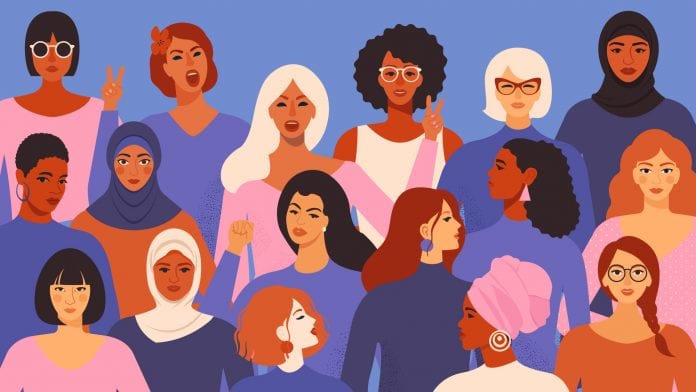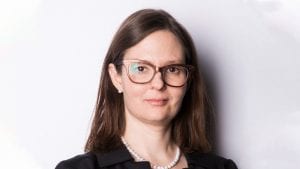
Introducing Ursula Mühle, Director of Education for EIT Health, who talks barriers, challenges and the gender question, and delves into how International Women’s Day is more than just a day.
International Women’s Day is a global event celebrating achievements without regard to divisions, whether national, ethnic, linguistic, cultural, economic or political. As highlighted by the International Womens’ Day campaign, the theme for this year (8 March 2019) is: “Think equal, build smart, innovate for change”, which puts innovation by women and girls, for women and girls, at the heart of efforts to accomplish gender equality.
Responsible for overseeing and sparking the Education Portfolio of EIT Health’s partners, Ursula Mühle, discusses with Health Europa her experiences as a female Director, ways in which society can overcome barriers women typically face, and the many diverse opportunities offered by EIT Health.
What does International Women’s Day mean to you?
International Women’s Day is a very important event to continue to highlight the importance of diversity within our society. Gender balance is clearly an important part of this, and we are still not yet as advanced as we could be in addressing gaps such as women in leadership positions, equal pay and certain aspects of education and employment.
What more could be done to engage young girls and women with STEM subjects during education and subsequent employment?
We see female participation drop drastically when we look at anything post hoc in STEM higher education. This level of education takes a long time, and it often happens at a time when women are also thinking about whether they would like to have a family. They will be considering how they make the various parts of their life work together in the future.
Although we are seeing a shift in how we define family care-givers in many countries, it is still true that it is often a female responsibility.
When it comes to career development, this has a knock-on effect as women may have taken time out or may look to work part-time to start a family and care for them. It is difficult to then catch up and it is a sad fact that, even today, having children affects the career trajectory of women more so than men.
We could improve the opportunities for women in science education and employment by looking at existing structures. For me, the way we must address this is to redefine how work-life balance is structured (both in education and employment) to remove the disadvantages faced by both women and men if they choose to have an education or career alongside a family. The traditional idea of a 9-5 day simply doesn’t work for everyone.
In terms of employment, we must offer a support system and a network to provide tailored training and opportunities for women and remove some of the disadvantages. Here at EIT Health we have WE Health, which provides training and networking opportunities for women in health innovation.
As a woman, did you experience any barriers during your progression to become the Director of Education for EIT Health?
Not in terms of becoming Director of Education at EIT Health, gender diversity is strong in our leadership team and, in fact, 30% of our management board is female – we will see if we can continue to increase this in the future!
Earlier on in my career, I had some challenges with those around me failing to see me as a decision maker. It has, at times, been assumed that I am a student, intern or there in a secretarial role rather than in a leadership role (perhaps not helped by my small height etc). These assumptions are hangovers from a time when there were very few women in leadership roles, but we must also recognise it as some level of ignorance. For me, I overcame this by being persistent – I stood my ground and corrected the assumptions straight away.
What do you believe will be the biggest challenge for the generation of women behind you? How do you feel the gender question in regard to issues such as women as Board Members in large companies or women as the heads of large (research etc.) organisations could be addressed? Are quotas the answer?
I believe that we are in a great position where we have society’s attention, we have real consensus that this issue is important to tackle, and we have many strong advocates who are campaigning to continue to make improvements. I believe that the next generation will benefit significantly from the great work of current and past generations, but of course there is more to do.
Quotas placed on ourselves, as leaders of organisations, are a good idea in my mind. I personally don’t feel that legal or government-imposed quotas have a place as this could lead to negatives as well as positives as companies strive to meet. Setting an internal culture of diversity from the top will lead to diversity throughout organisations and so this is very beneficial. Without this, organisations may struggle to break a historical cycle. In fact, studies such as ‘The Mix That Matters’ from The Boston Consulting Group and The Technical University of Munich have shown that concerted efforts to increase diversity (not just gender, but also ethnic) leads to greater innovation.1
Most importantly, diversity must exist within decision making processes (for example the hiring committee for the board member) so that we remove some of the barriers and disadvantages that can be faced by women in all-male or male dominated environments.
We are naturally wired to prefer those who are like us – we understand them, we tend to agree with their values and views, we respond to their method of communicating. If there is an all-male decision board for example, whether conscious or unconscious, there may be a male advantage. I have made a point, for many years, of ensuring gender diversity in decision making within the education part of our organisation (Campus) – for example, our external hearing evaluators who help us to assess proposals for funding. For me, this is important in breaking down existing perception barriers for women.
How is equality ensured at EIT Health? How does this feature in your own role?
We are lucky at EIT Health that we have never needed to have a defined process for diversity. We are a relatively young organisation (only three years old), and we have had both strong female and male leaders from the very beginning which has meant that gender diversity has been woven into the fabric of EIT Health.
We do keep track of the gender balance within our organisation and the projects that we support, and we have always seen a very good balance of men and women. In addition, with decision-making processes, we do ensure there is both male and female participation there.
What would you say to young girls and women now who are thinking of pursuing a career in STEM?
My advice would be to become part of a network such as EIT Health, or WiTEC EU – there are so many great ones. That not only enable the empowerment of women, but help anyone to succeed, you cannot do it alone. You need a network, you need mentors and you need support.
Finally, I would say believe in yourself. Potential, knowledge and talent does not belong to any gender – it is something we all have inside us, and with commitment, hard work and support can develop into something great.
References
The Mix That Matters. The Boston Consulting Group and The Technical University of Munich, 2017. Available at http://media-publications.bcg.com/22feb2017-mix-that-matters.pdf.

Ursula Mühle
Director of Education
Tweet @UrsulaMuehle
EIT Health









